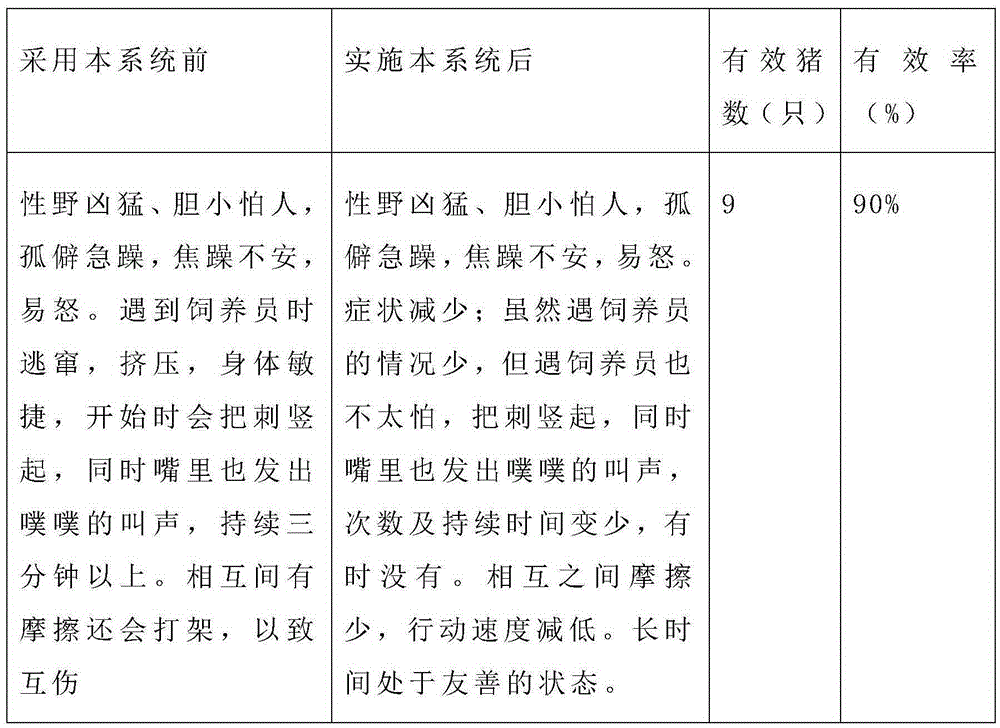Breeding method for porcupines
A pig house, square technology, used in animal feed, animal feed, animal houses, etc., to reduce diarrhea, reduce adverse symptoms, and enhance resistance
- Summary
- Abstract
- Description
- Claims
- Application Information
AI Technical Summary
Problems solved by technology
Method used
Image
Examples
Embodiment 1
[0047] Embodiment 1: a kind of raising method of porcupine, comprises physical part, food part, feeding method;
[0048] A. The physical part includes the courtyard surrounded by walls. The courtyard is built on the open space, and the courtyard is larger than 400 square meters; the courtyard is square or circular; the wall is 1.3 meters above the ground; the wall is 0.5 meters deep underground; Pig houses, the edge of each pig house is at least 4 meters away from the nearest wall; each pig house is built on a platform at least 1.2 meters above the ground; each pig house is square or circular, and the area of each pig house is not less than 4 square meters; No more than 3 porcupines are kept in each pig house;
[0049] There are doors on the southeast and north sides of the pig house, which are the southeast door and the north door respectively. There is a soil layer on the top of the pig house, the thickness of the soil layer is 0.5 meters, and plants are planted in the soi...
Embodiment 2
[0074] Embodiment 2: The characteristics of this example are: No. 1 food consists of the following components by weight and component ratio, 25 parts of pumpkin, 15 parts of sweet potato, 10 parts of lettuce, 40 parts of corn, 20 parts of wheat bran, and 15 parts of sorghum rice , 15 parts of soybeans, 1.5 parts of bone meal, 2.5 parts of table salt, 6 parts of oyster shells;
[0075] 40 parts of mung bean, 4 parts of lotus seed meat, 5 parts of raw land, 1 part of coptis; 5 parts of sand ginseng; 2 parts of chicken bone grass; 5 parts of Prunella vulgaris; 5 parts of Ophiopogon japonicus; 3 parts of Polygonatum odoratum; 4 parts of Imperata rhizome; 3 copies.
[0076] Food No. 2 is composed of the following components by weight and component ratio, 40 parts of corn, 30 parts of wheat, 30 parts of cabbage, 15 parts of radish, 40 parts of pumpkin and 10 parts of peanut. All the other are with embodiment 1.
[0077] Oyster shells are the shells of oysters, oysters, oysters, e...
PUM
 Login to View More
Login to View More Abstract
Description
Claims
Application Information
 Login to View More
Login to View More - R&D
- Intellectual Property
- Life Sciences
- Materials
- Tech Scout
- Unparalleled Data Quality
- Higher Quality Content
- 60% Fewer Hallucinations
Browse by: Latest US Patents, China's latest patents, Technical Efficacy Thesaurus, Application Domain, Technology Topic, Popular Technical Reports.
© 2025 PatSnap. All rights reserved.Legal|Privacy policy|Modern Slavery Act Transparency Statement|Sitemap|About US| Contact US: help@patsnap.com



